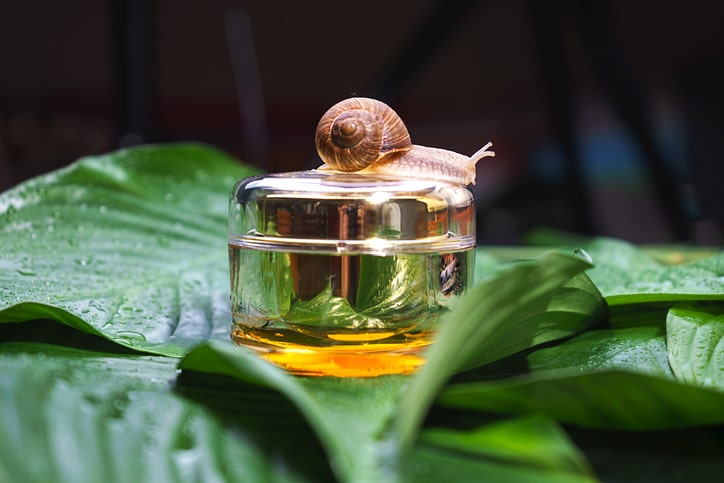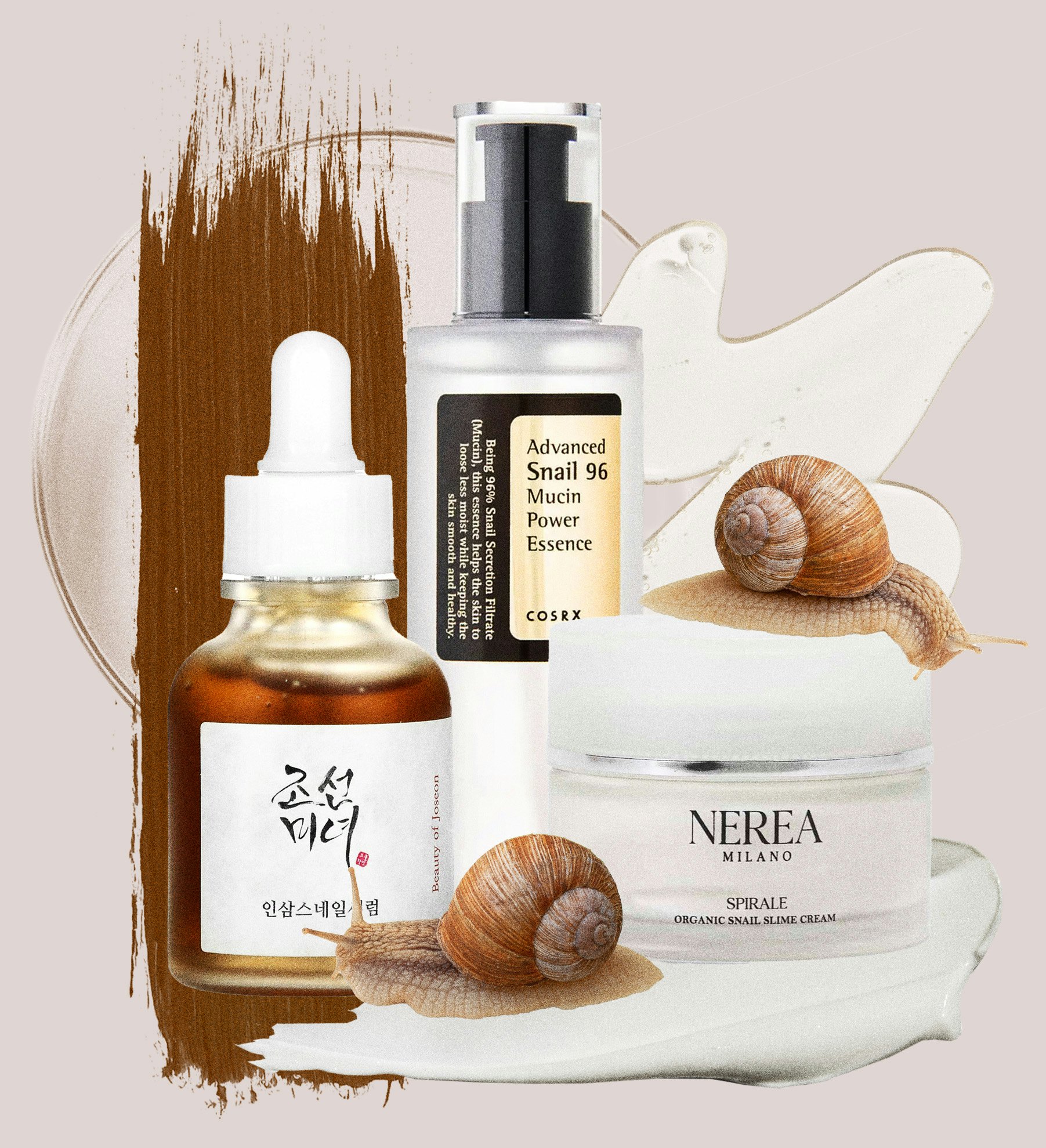Snail slime (also known as snail secretion filtrate) has become one of beauty’s favorite buzz ingredients. It shows up in everything from eye creams to BB creams, especially in K-beauty. But beneath the hype, what does science actually say? Is it worth the price — or maybe overhyped? Let’s dive deep so you can choose with clarity.

What Is Snail Slime?
-
The version used in skincare typically comes from the garden snail Cryptomphalus aspersa (formerly Helix aspersa Müller). It’s listed on labels as snail secretion filtrate.
-
Interestingly, the slime harvested isn’t the “trail slime” you see when snails slide around. It’s the slime they produce when stressed. Methods include gentle irritation (e.g. salty water, mild poking) to stimulate secretion.
-
After harvesting, it’s purified (filtered) so it does not carry unwanted bacteria or debris. Snails are not killed in the process.

What’s In Snail Slime? Key Ingredients & Their Potential
Snail slime is complex. Here’s what’s inside — and what it might do:
| Component | What It Actually Does | How It Might Benefit Skin |
|---|---|---|
| Glycosaminoglycans & Proteoglycans | Long sugar-based molecules; humectants — they draw moisture in. | Helps skin feel hydrated, plump. Great for dry or slightly dehydrated skin. |
| Allantoin | Soothing, mild skin-protectant. | Helps calm irritation, possibly soothe sensitive or red skin. |
| Hyaluronic Acid | A powerful humectant that attracts water. | Adds hydration, helps reduce visible dryness. |
| Glycolic Acid | A gentle chemical exfoliant — encourages skin cell turnover. | May help improve texture, reduce dullness over time. |
| Antimicrobial Peptides | Helps fight microbes; minor antimicrobial effects. | May assist in keeping skin clean, less irritation or breakouts (though not as strong as actives designed for acne). |
| Collagen & Elastin | Big proteins — too large to penetrate deep into skin. | Primarily for surface effect (smoothness), or possibly as film-formers, not rebuilding from within. |
What the Studies Tell Us
Science supports some of snail slime’s claims — but with caveats.
-
In vitro (lab) studies show snail slime has antioxidant activity, increasing enzymes like superoxide dismutase (SOD). It also helps fibroblasts (cells that produce collagen) and may reduce matrix metalloproteinases (which break down collagen).
-
Clinical trials are limited: many use small sample sizes; only a few are randomized, blinded, or controlled.
-
In cases of wounded tissue (e.g. burns), snail slime showed acceleration of healing.
-
For “normal” skin (especially skin damaged by sun), improvements were observed in hydration, smoothness, and reduced wrinkle depth. But it’s often unclear how much of that is due to moisture vs “structure rebuilding.”

What to Keep in Mind & When It Might Not Be Enough
While snail slime is promising, it’s not a miracle fix:
-
Because some components (like collagen, elastin) are too large to penetrate skin, many “structural” claims may be overstated.
-
Products vary widely in concentration, purity, and additional actives. Two snail creams may feel very different because of formulation, not just because of snail slime itself.
-
If your skin issue is severe (deep wrinkles, heavy photodamage) or requires medical-grade actives (retinoids, professional treatments), snail slime is a supportive, not primary, solution.
-
Also, if you have sensitive skin or a history of allergies, always patch test — peptides or acids in the filtrate might trigger irritation in some people.
How to Use Snail Slime Beauty Products for Best Results
Here’s a guide to integrate snail slime into your routine in a way that maximizes benefits and minimizes risk:
-
Choose products with full ingredient transparency — look for % snail secretion filtrate, whether additional strong actives are included.
-
Use after cleansing / toning — on slightly damp skin helps humectants work better.
-
Layer wisely — maybe a snail slime essence/serum, then moisturizer or occlusive if your skin is dry.
-
Frequency — begin 3–5 times per week; increase if well tolerated.
-
Sun protection is essential — snail slime may help with damage repair, but it doesn’t substitute for sunscreen.

Final Thoughts
If I were you, here’s how I’d see snail slime:
-
Definitely a lovely addition for hydration and mild skin texture improvement.
-
A good partner in routines for sensitive, dry, or aging skin that wants gentler repair.
-
But don’t expect it to outperform strong actives when used alone, especially for serious concerns.
✨ Editor’s Pick: If you’re trying snail slime for the first time, pick a mid-priced, reputable product (look for ESSENCE or SERUM with ≥70% filtrate). Pair it with gentle retinoids or peptides for nights when your skin tolerates more — but always remember: even the best snail slime can’t substitute sunscreen or consistent skin protection.
